
How to Use LM2596 : Examples, Pinouts, and Specs
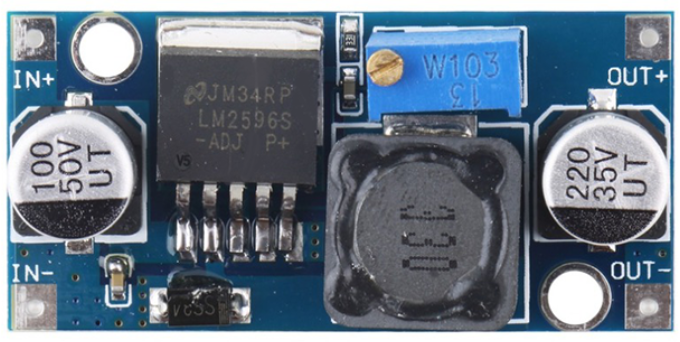
 Design with LM2596 in Cirkit Designer
Design with LM2596 in Cirkit DesignerIntroduction
The LM2596 is a step-down (buck) voltage regulator designed to efficiently convert a higher input voltage into a stable, lower output voltage. It is capable of delivering up to 3A of output current, making it ideal for powering a wide range of electronic devices. With its wide input voltage range (4.5V to 40V), the LM2596 is commonly used in power supply circuits, battery chargers, and embedded systems.
Explore Projects Built with LM2596
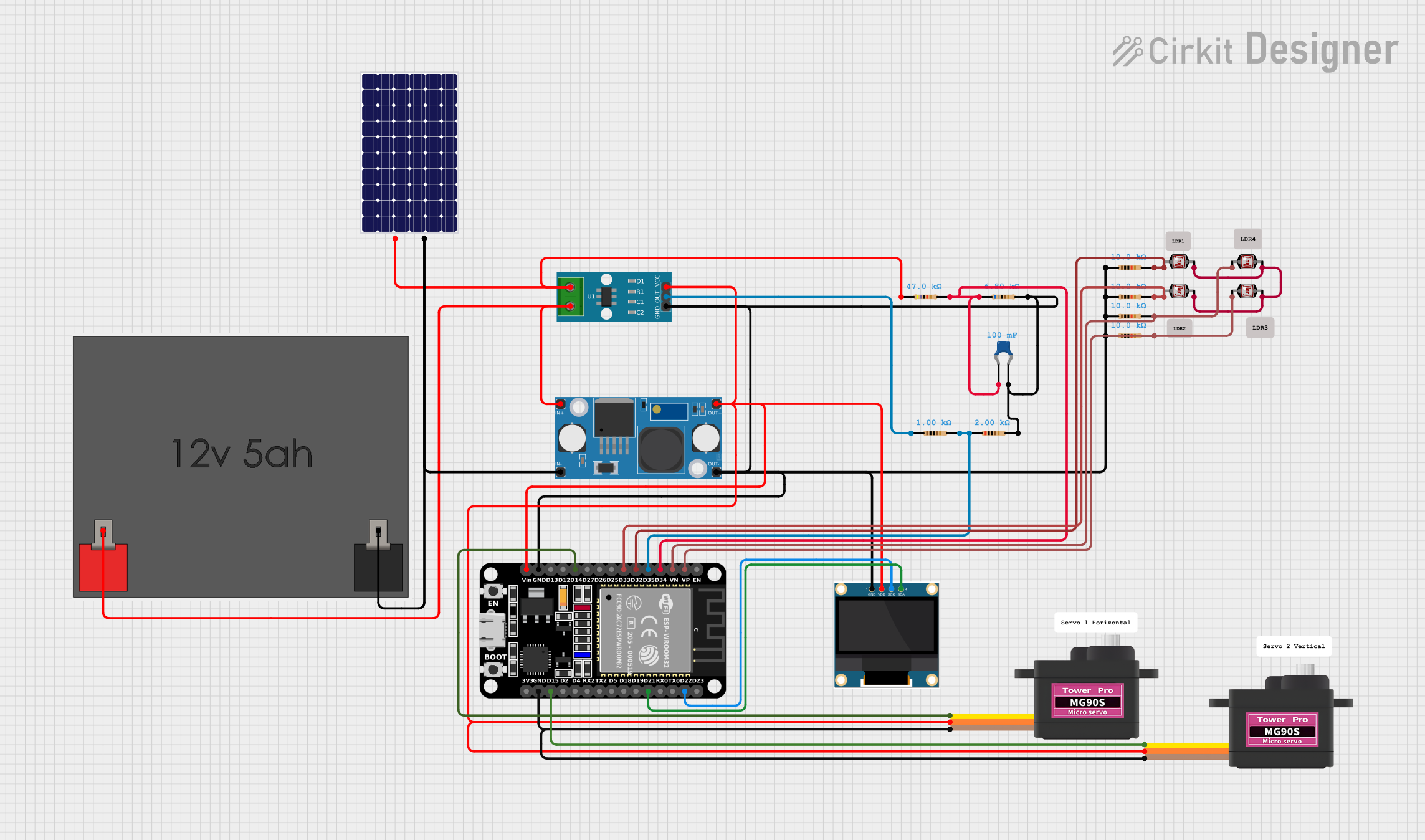
 Open Project in Cirkit Designer
Open Project in Cirkit Designer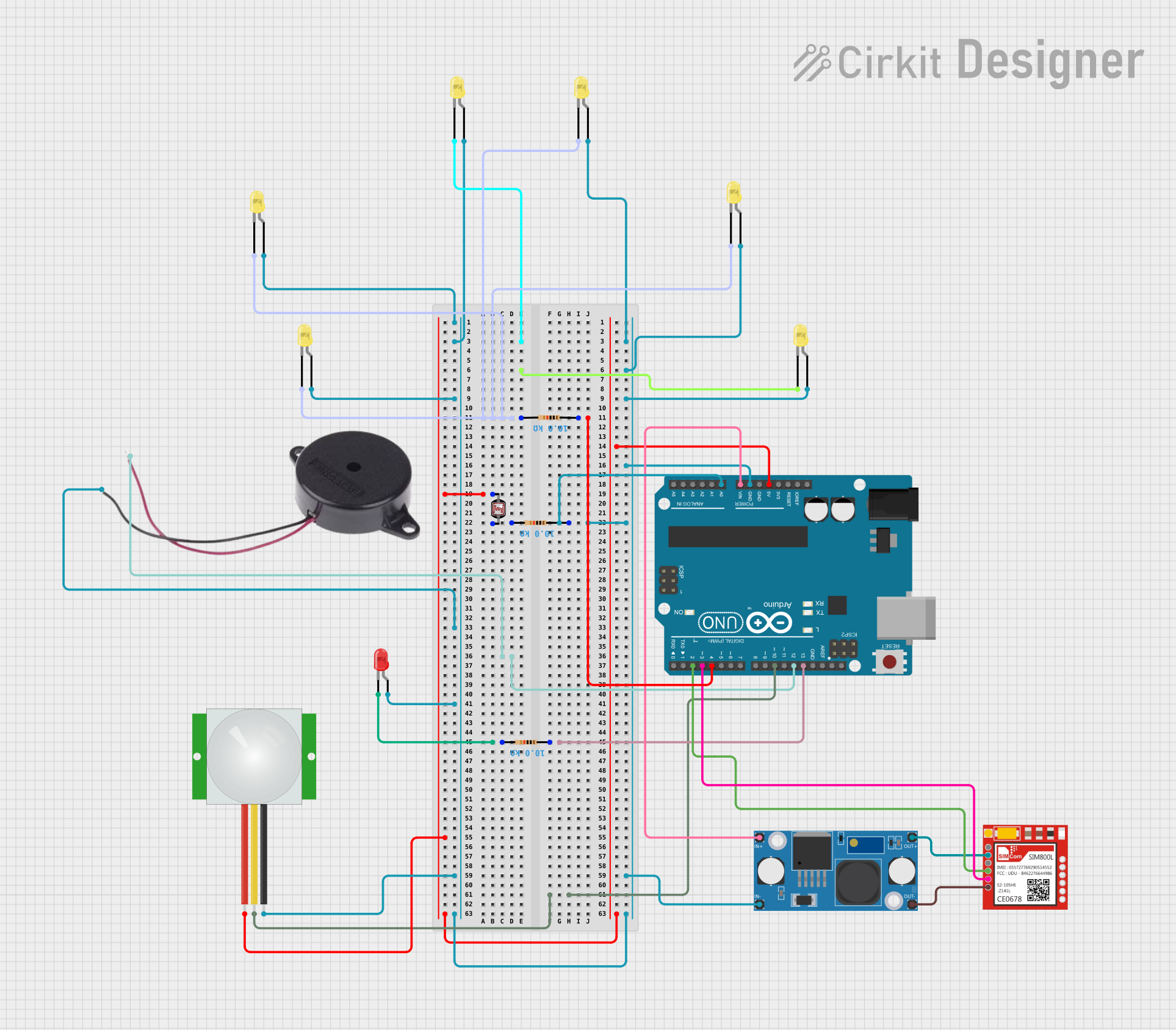
 Open Project in Cirkit Designer
Open Project in Cirkit Designer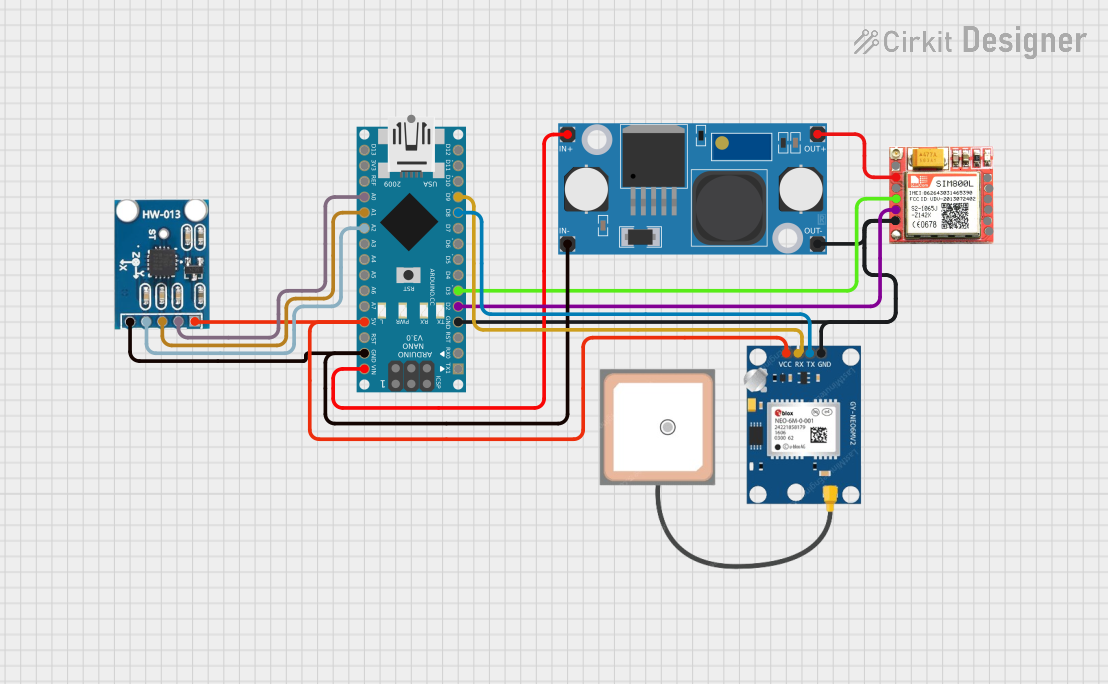
 Open Project in Cirkit Designer
Open Project in Cirkit Designer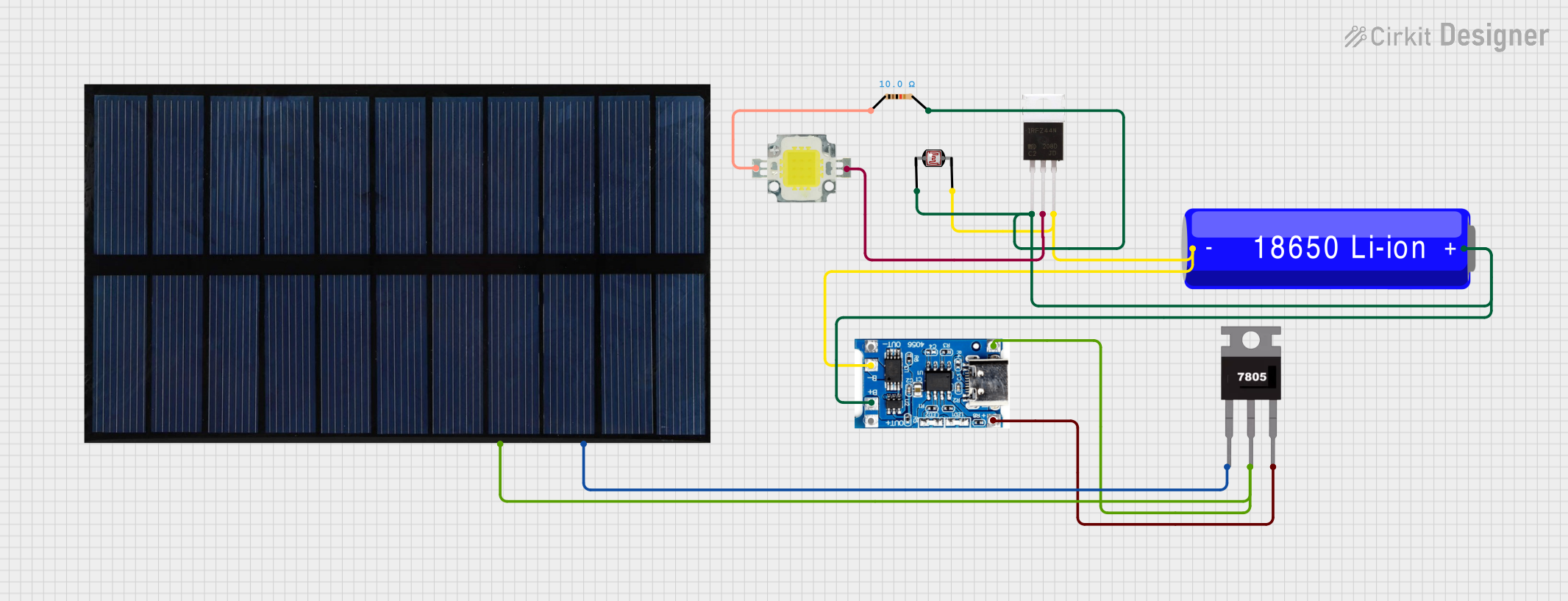
 Open Project in Cirkit Designer
Open Project in Cirkit DesignerExplore Projects Built with LM2596

 Open Project in Cirkit Designer
Open Project in Cirkit Designer
 Open Project in Cirkit Designer
Open Project in Cirkit Designer
 Open Project in Cirkit Designer
Open Project in Cirkit Designer
 Open Project in Cirkit Designer
Open Project in Cirkit DesignerCommon Applications and Use Cases
- DC-DC power supply modules
- Battery-powered devices
- Voltage regulation for microcontrollers and sensors
- LED drivers
- Industrial and automotive electronics
Technical Specifications
Key Technical Details
- Input Voltage Range: 4.5V to 40V
- Output Voltage Range: 1.23V to 37V (adjustable)
- Output Current: Up to 3A
- Efficiency: Up to 90% (depending on input/output voltage and load)
- Switching Frequency: 150 kHz (fixed)
- Thermal Shutdown: Yes
- Overcurrent Protection: Yes
- Operating Temperature Range: -40°C to +125°C
Pin Configuration and Descriptions
The LM2596 is typically available in a 5-pin TO-220 package. Below is the pinout and description:
| Pin Number | Pin Name | Description |
|---|---|---|
| 1 | VIN | Input voltage pin. Connect to the unregulated DC input voltage. |
| 2 | Output | Regulated output voltage pin. Connect to the load. |
| 3 | Ground (GND) | Ground pin. Connect to the negative terminal of the input and output. |
| 4 | Feedback | Feedback pin. Used to set the output voltage via an external resistor divider. |
| 5 | ON/OFF | Enable pin. Connect to ground to enable the regulator; leave floating to disable. |
Usage Instructions
How to Use the LM2596 in a Circuit
- Input Voltage: Connect the input voltage (4.5V to 40V) to the VIN pin. Ensure the input voltage is higher than the desired output voltage by at least 1.5V for proper regulation.
- Output Voltage Adjustment: Use a resistor divider network connected to the Feedback pin to set the desired output voltage. The output voltage can be calculated using the formula: [ V_{OUT} = V_{REF} \times \left(1 + \frac{R1}{R2}\right) ] where ( V_{REF} ) is 1.23V, and ( R1 ) and ( R2 ) are the resistors in the divider.
- Output Capacitor: Place a low ESR capacitor (e.g., 100µF) at the output to stabilize the voltage and reduce ripple.
- Input Capacitor: Add a capacitor (e.g., 100µF) at the input to filter noise and improve stability.
- Inductor Selection: Choose an inductor with a suitable current rating (greater than 3A) and appropriate value (e.g., 33µH) for your application.
- Enable Pin: Connect the ON/OFF pin to ground to enable the regulator. If unused, leave it floating.
Example Circuit
Below is a basic circuit diagram for using the LM2596 to step down 12V to 5V:
VIN (12V) ----+----[C1: 100µF]----+----(VIN Pin)
| |
[L: 33µH] [C2: 100µF]
| |
(Output Pin)----+----(GND Pin)
|
Load
Using LM2596 with Arduino UNO
The LM2596 can be used to power an Arduino UNO by stepping down a higher voltage (e.g., 12V) to 5V. Below is an example Arduino code to read a sensor powered by the LM2596:
// Example Arduino code to read a sensor powered by LM2596
// Ensure the LM2596 output is set to 5V to power the Arduino and sensor.
const int sensorPin = A0; // Analog pin connected to the sensor
int sensorValue = 0; // Variable to store the sensor reading
void setup() {
Serial.begin(9600); // Initialize serial communication
pinMode(sensorPin, INPUT); // Set the sensor pin as input
}
void loop() {
sensorValue = analogRead(sensorPin); // Read the sensor value
Serial.print("Sensor Value: ");
Serial.println(sensorValue); // Print the sensor value to the Serial Monitor
delay(1000); // Wait for 1 second before the next reading
}
Important Considerations and Best Practices
- Heat Dissipation: The LM2596 can generate heat under high load conditions. Use a heatsink if necessary.
- Input Voltage Margin: Ensure the input voltage is at least 1.5V higher than the desired output voltage.
- Ripple Reduction: Use low ESR capacitors and a properly rated inductor to minimize output voltage ripple.
- PCB Layout: Keep the input and output capacitors close to the LM2596 pins to reduce noise and improve stability.
Troubleshooting and FAQs
Common Issues and Solutions
Output Voltage is Incorrect:
- Check the resistor divider network connected to the Feedback pin.
- Verify the input voltage is within the specified range and sufficiently higher than the output voltage.
Excessive Heat:
- Ensure the load current does not exceed 3A.
- Use a heatsink or improve ventilation around the LM2596.
High Output Ripple:
- Use low ESR capacitors at the input and output.
- Verify the inductor value and current rating are appropriate for the application.
No Output Voltage:
- Check if the ON/OFF pin is properly connected to ground.
- Verify all connections and ensure the input voltage is applied.
FAQs
Q: Can the LM2596 be used for 3.3V output?
A: Yes, the LM2596 can be configured for a 3.3V output by adjusting the resistor divider network.
Q: What is the maximum input voltage for the LM2596?
A: The maximum input voltage is 40V. Exceeding this value may damage the component.
Q: Can the LM2596 power a Raspberry Pi?
A: Yes, the LM2596 can step down 12V to 5V to power a Raspberry Pi. However, ensure the current demand does not exceed 3A.
Q: Is the LM2596 suitable for battery charging?
A: Yes, the LM2596 can be used in battery charging circuits, but additional circuitry may be required for proper charge control.